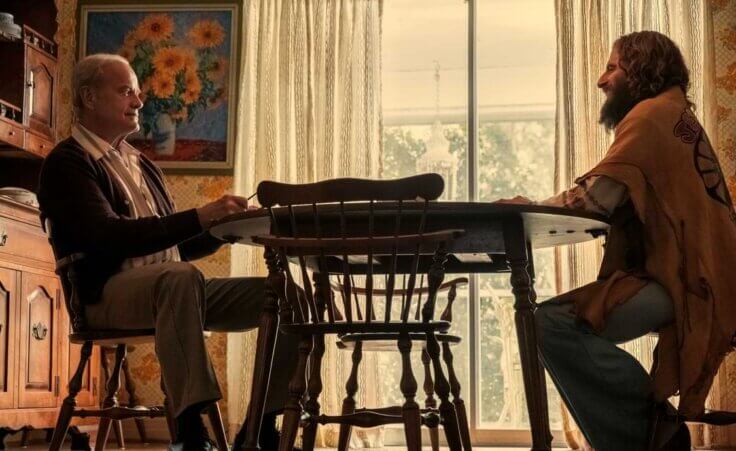
Star Trek Beyond is the third installment of the franchise reboot that began in 2009, so it’s fitting that the film takes place in the third year of the ship’s five-year mission “to explore strange new worlds, to seek out new life and new civilizations, [and] to boldly go where no man has gone before.” By the start of the current story, however, the extent of that mission and the time spent in the outer-most reaches of space have begun to weigh heavily on Captain Kirk and his crew.
We find Kirk, in particular, struggling with questions of purpose and motivation. The dual burdens of a mission that will never truly end and an upcoming birthday that will mark an age his father—who died in the 2009 film’s opening sequence—never reached have led him to contemplate leaving his starship for a new position. So when the Enterprise pulls into Yorktown Base, a massive new space station that functions as the Federation’s hub in this region of space, everyone on board welcomes the break from life in the darkness of space.
That respite proves to be far more brief than planned, however, when a lone survivor from a stranded ship in a nearby nebula comes seeking their aid. Chaos ensues shortly thereafter when the Enterprise is attacked and most of its crew is left either dead or stranded on a neighboring world. Krall, who perpetrated the attack and is played by a delightfully menacing Idris Elba, seeks an artifact on board the Enterprise that he can use to wreak havoc on the Federation. In light of this new threat, individual problems must be set aside and personal questions left unanswered in order for Kirk, Spock, and the others to save the crew and stop Krall.
Ultimately, Star Trek Beyond is an entertaining film that walks a fine balance between paying homage to the source material—which celebrates its fiftieth anniversary this year—and satisfying the needs of today’s blockbuster films. The action scenes are great and the dialogue is engaging. However, I think I would have enjoyed it more if I’d gone in expecting the latter to be the primary focus.
You see, for all the breathtaking visual effects and well-choreographed action scenes, the best parts of this film are the characters. Their interactions and the way individual struggles provide more than a background for high-budget effects is what truly makes the film work. It’s the people that take center stage throughout, and the movie is better as a result.
That focus on people offers as an important reminder for our churches as well. At times, it can be easy to lose sight of why we exist—of why the Lord chose to share his message of salvation through his followers instead of public acts of indisputable proof that he is God. Such acts were one of the primary temptations he faced in the desert and, unfortunately, we have not always followed his lead in resisting them (Matthew 4:5–6).
I’ve often thought that it would have made far more sense for Jesus to show up at the Temple following his resurrection in order to reveal to the whole of Jerusalem that he had risen. In my mind, it always seemed like such indisputable proof—though some would have surely continued to find ways to doubt—would have been far more efficient than tasking a scared and relatively unimportant group of people with convincing the world that he was who he had claimed to be.
The thing is, though, such overt displays would not engender the kind of personal relationship he longs to have with each of us. There will be a time when every knee will bow and every tongue will confess that he is God (Philippians 2:10–1), but his first choice will always be that we come to that realization willfully rather than by force. Such a choice happens best when we are led there by others that have made a similar journey. Even Paul, whose encounter with the Lord was about as forceful as we find in Scripture, needed Ananias to help him truly understand and accept God’s offer of salvation (Acts 9:1–19).
What our culture needs most is Christians who share our faith with others through person-to-person interaction rather than through programs or rhetoric. Surely, there is room for those latter two methods, but they will never replace the power and effectiveness of one person telling another person of God’s grace and mercy.
As D.T. Niles once wrote, the heart of Christianity is simply “one beggar telling another beggar where he found bread.” That’s been God’s plan from the start. Is it yours?













